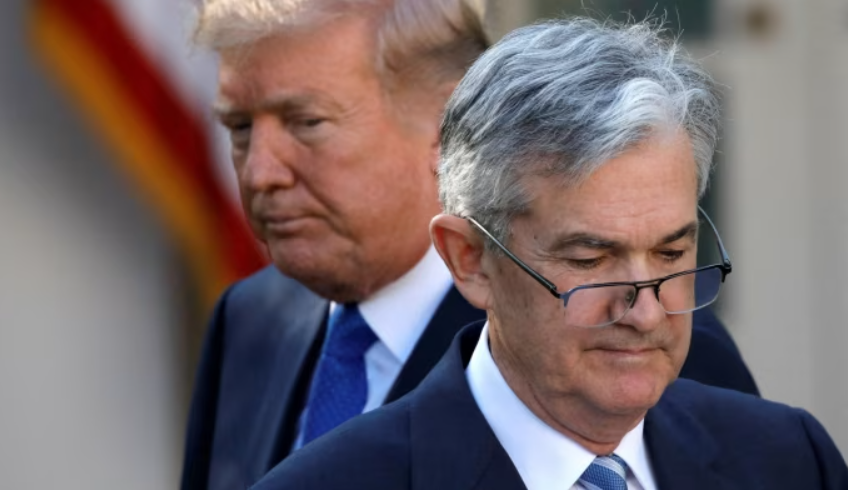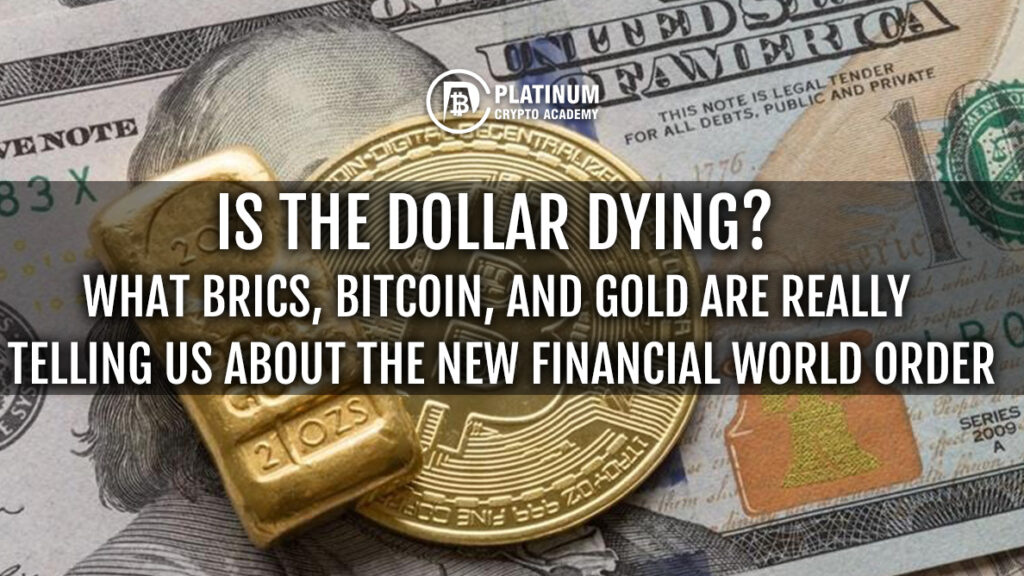Wall Street’s turmoil is both a crisis and an opportunity. Those who adapt by diversifying into non-dollar assets or betting on emerging markets as wealth and power are redefined could come out ahead.

Recently, a rare and unsettling phenomenon dubbed the “triple kill” — meaning simultaneous crashes in stocks, bonds and the dollar — rocked financial markets in the United States, the backbone of the global economy. The ensuing market chaos was more than a Wall Street headache. It was a global warning.
A triple-kill event is exceedingly rare in U.S. capital markets because of the complex interplay of economic forces and the inherent diversification of the asset classes. Stocks, bonds and the dollar typically respond differently to macroeconomic conditions, as they are driven by distinct factors. Equity markets reflect corporate earnings and investor sentiment; bond prices are sensitive to interest rate expectations and inflation; and the dollar's value is influenced by global demand, trade dynamics and monetary policy. For a simultaneous crash to occur, a singular, severe shock such as a catastrophic geopolitical event, a systemic financial crisis or a sudden collapse in confidence in U.S. institutions would need to overwhelm these divergent drivers and align their downward trajectories.
Historical data, such as the low correlation between these asset classes during crises (for example, the 2008 financial crisis or the 2020 COVID-19 market shock), underscores their tendency to move asynchronously, with bonds often serving as a safe haven when stocks decline, or the dollar strengthening amid global uncertainty. Consequently, the structural and behavioral differences in these markets make a triple kill a statistically improbable phenomenon under normal or even stressed market conditions. Their frequent appearance so far this year exposes structural fragility.
The downgrade of U.S. sovereign credit to Aa1 by Moody’s on May 16, coupled with a $3.8 trillion debt expansion from Donald Trump’s tax bill, has eroded confidence. Japan’s $20 billion foreign bond sell-off and the Fed’s policy inertia amid 5 percent long-term yields signal a global reassessment of U.S. fiscal sustainability. The Dow, Nasdaq and S&P 500 endured brutal sell-offs — single-day drops as severe as 1.91 percent (Dow) and 1.41 percent (Nasdaq) on May 22. The dollar index has plummeted to 99.60, and Treasury yields have spiked to alarming levels, with the 30-year bond hitting 5.09 percent. Far from a one-time shock, these synchronized crashes have become a recurring nightmare.
Safe-haven fading
The seismic changes stemmed directly from Trump’s return to the Oval Office and his relentless pursuit of his “MAGA” doctrine. His aggressive tariff hikes, which escalated on April 2, have drawn global condemnation. Rising inflation expectations are pushing treasury yields above 5 percent, hammering bonds. The dollar’s slide reflects a growing global skepticism about the reliability of U.S. assets. Compounding the issue, the Moody’s downgrade of U.S. credit was driven by concerns over a $36.2 trillion national debt. Weak demand for Treasury auctions has driven yields up, creating a vicious cycle as investors hold off, betting on even higher returns.
The trouble for the U.S. isn’t just domestic. Global liquidity is tightening, with Japan’s bond auctions faltering and the yen’s weakness spilling over into U.S. markets. Once the ultimate safe haven, U.S. dollars, treasuries and stocks are losing their appeal. Investors are discovering that bonds and cash cannot shield them from slumps in stocks or commodities, forcing a rethink of wealth protection strategies. Gold prices have surged (spot gold hit $3,314.77 per ounce on May 22), while bitcoin futures briefly touched $110,000 as emerging market assets gained traction as alternatives.
This isn’t a mere market blip. It’s a sign of cracks in America’s financial dominance. Richard Nixon’s 1971 decision to abandon the gold standard reshaped the global financial order, but the dollar’s supremacy endured, propped up by globalization and American economic might. Now, Trump’s “America first” isolationism and protectionist tariffs are undermining that foundation. Investors are shifting to “sell America,” a sentiment echoed across global markets in light of growing distrust in U.S. assets.
The Federal Reserve is stuck in a no-win situation. Soaring yields and inflation fears require a tightened policy response, but stock market volatility and recession risks call for easing. Economists warned on April 9 that without swift action, the triple kill could trigger a 1929-style crash. Yet, the Fed’s options are limited by a looming debt ceiling and ballooning deficits. The Fed’s policy guidance as of May indicates that only a 0.25 percent rate cut is expected this year, raising the stakes.
The fallout reaches far beyond Wall Street. Emerging markets are bracing for capital flight as risk-averse investors pull back. A weaker dollar could drive up commodity prices. Brent crude was nearing $70 per barrel in May, adding fuel to global inflation fears. Energy and food markets, strained by geopolitical tensions and supply chain disruptions, face further volatility. For China, the picture is mixed: Tighter liquidity threatens its export-driven economy, but U.S. market chaos has opened a window for China to push the internationalization of the yuan and attract capital to its markets.

Charting the chaos
The triple kill may keep markets on edge in the short term, but the long-term outlook hinges on three factors, starting with Trump’s policies. His doubling down on tariffs and isolationism could deepen the chaos, but pragmatic trade deals, especially with China in the next 90 days, might restore confidence.
Second, the Fed could move to maintain rates with minimal cuts, which could tame inflation but might exacerbate the triple kill. Aggressive easing would risk undermining the dollar’s global status.
Third, with gold above $3,300 per ounce, bitcoin near $110,000 and U.S. assets losing their safe-haven status, emerging market assets could become go-to options as investors reallocate their assets.
The triple kill is a wake-up call, as U.S. markets, long a cornerstone of global stability, are showing signs of tension and instability. The dollar’s once-unassailable dominance is under scrutiny as economic power shifts toward China and Japan. Over the past five years (2020-24), the U.S. dollar’s share of globally allocated foreign exchange reserves, as reported by the IMF’s COFER data, has declined from approximately 59.0 percent in Q4 2020 to 57.8 percent in Q4 2024, a decrease of about 1.2 percentage points, or roughly 0.24 percentage points per year. This gradual decline reflects a slow trend toward reserve diversification, with currencies such as the euro and yuan gaining marginal shares, even though the dollar remains dominant. The rise of alternative reserve currencies could reshape the global financial order.
On May 23, Trump unsettled financial markets by threatening a sweeping 50 percent tariff on the European Union and a 25 percent levy on Apple Inc. unless the tech giant relocates iPhone manufacturing to the U.S., reigniting investor concerns over a potential new tariff war.
For investors, this is a time for both caution and boldness. Wall Street’s turmoil is both a crisis and an opportunity. Those who adapt by diversifying into non-dollar assets or betting on emerging markets could come out ahead. As the U.S. dollar’s grip weakens, the world stands on the brink of a new financial era in which wealth and power are redefined.
